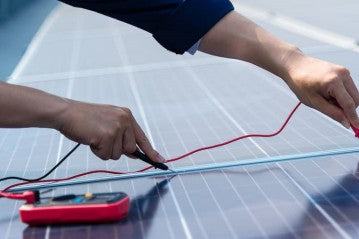
With the growing popularity and increased adoption of solar energy systems, it is essential to have a proper understanding of the components that make up a solar setup. One crucial component that plays a vital role in the performance and longevity of your solar energy system is the solar charge controller. In this article, we will explore the basics of solar charge controllers, discuss how to choose the right one, and highlight the benefits of investing in a Maximum Power Point Tracking (MPPT) solar charge controller.
The Basics of Solar Charge Controllers
Solar charge controllers are devices that regulate the flow of electric current between your solar panels and the batteries in your solar energy system. They act as a middleman, ensuring that the batteries are charged optimally and preventing overcharging or deep discharging, which can damage the batteries.
There are two main types of solar charge controllers: Pulse Width Modulation (PWM) and Maximum Power Point Tracking (MPPT).
PWM controllers are the traditional type and work by gradually reducing the charging voltage to the batteries as they approach full capacity. This method is effective for smaller solar installations and is generally more affordable.
MPPT controllers, on the other hand, are more advanced and efficient. They use sophisticated algorithms to track the maximum power point of the solar panels and convert the excess voltage into usable current. MPPT controllers are ideal for larger solar installations and are highly recommended for maximizing the energy harvest from your solar panels.
How To Choose The Right Solar Charge Controller
Choosing the right solar charge controller for your system involves considering several factors. Here are some key considerations to keep in mind:
a) System Voltage: Determine the voltage of your solar energy system. Common system voltages for residential applications are 12V, 24V, or 48V. Ensure that the solar charge controller you choose is compatible with your system voltage.
ECGSOLAX offers a range of high-quality solar chager controllers suit different system voltage, such as our 60A DC 12V/24V/36V/48V MPPT Solar Charge Controller and 60Amp 12V/24V/36V/48V PWM Solar Charge Controller.
If you are interested in our products, please contact us and learn more!
b) Maximum Current: Determine the maximum current rating of your solar panels. This information can usually be found in the panel's specifications. Ensure that the solar charge controller can handle the maximum current output of your solar panels.
c) Battery Type: Consider the type of battery you are using in your solar energy system, such as lead-acid, lithium-ion, or gel batteries. Different battery chemistries have specific charging requirements, and it is essential to choose a solar charge controller that supports the charging profile of your batteries.
d) Load Control: Determine if you need load control functionality in your solar charge controller. Load control allows you to connect and control DC loads such as lights or fans directly from the solar charge controller. This feature can be beneficial for off-grid or hybrid solar systems.
e) Temperature Compensation: Consider whether the solar charge controller offers temperature compensation. Temperature compensation adjusts the charging voltage based on the temperature to ensure optimal battery charging and longevity, particularly in extreme temperature conditions.
f) System Expansion: If you plan to expand your solar energy system in the future, ensure that the solar charge controller can accommodate additional solar panels or batteries.
The Benefits of Buying a MPPT Solar Charge Controller
Investing in an MPPT solar charge controller offers several advantages over PWM controllers. Here are some key benefits:
a) Increased Efficiency: MPPT controllers can convert a higher voltage from the solar panels into usable current for charging the batteries. This increased efficiency translates into more power harvested from your solar panels, resulting in a higher overall system performance.
b) Flexibility in Panel Configuration: MPPT controllers can handle higher voltage input from the solar panels, allowing for the series connection of panels, which is advantageous when dealing with long cable runs. This flexibility in panel configuration enables you to design your solar array more efficiently.
c) Better Performance in Cold Weather: MPPT controllers are generally more effective in cold weather conditions, where solar panels tend to produce higher voltages. The MPPT algorithm ensures that the excess voltage is efficiently utilized, resulting in improved charging performance.
d) Future-Proofing: As solar panel technology continues to advance, MPPT controllers are better equipped to handle new panel technologies with higher voltage outputs. Investing in an MPPT controller ensures that your solar energy system is compatible with future panel upgrades.
Conclusion
When it comes to solar energy systems, choosing the right solar charge controller is crucial for optimal system performance and battery longevity. Consider the factors mentioned above, such as system voltage, maximum current, battery type, load control, temperature compensation, and system expansion, to make an informed decision. Furthermore, investing in an MPPT solar charge controller offers numerous benefits, including increased efficiency, flexibility in panel configuration, better performance in cold weather, and future-proofing your system. By selecting the right solar charge controller, you can ensure the smooth and efficient operation of your solar energy system for years to come.

0 Kommentare